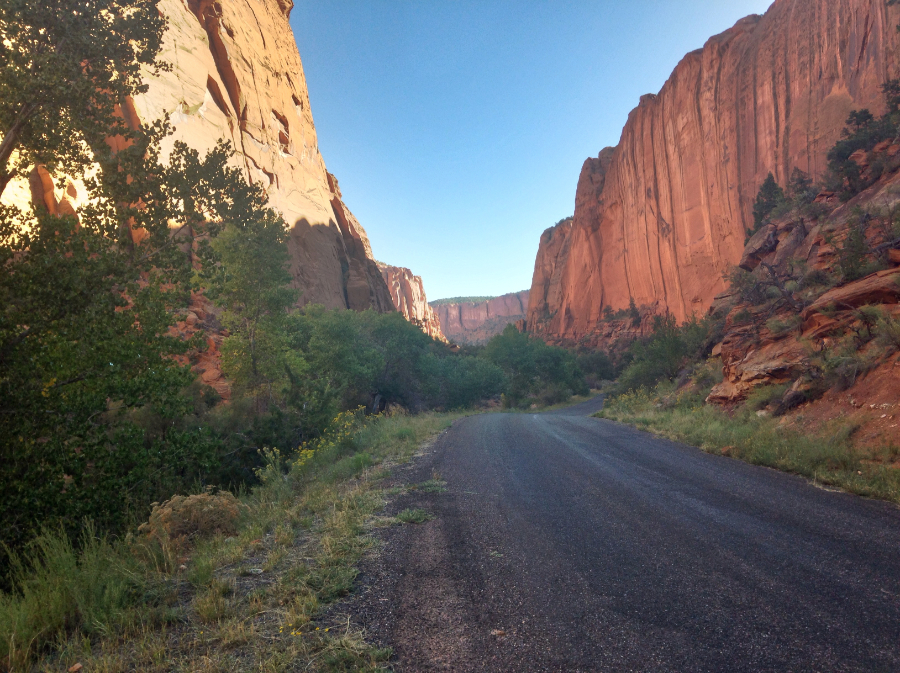
VISITORS TO SOUTHERN UTAH probably know about State Route 12 that leads from US-89 to Bryce Canyon, then to Escalante (one of the gateways to popular slot canyons), then turns northward along a very narrow (and scary to some) ridge line before climbing up and over the mountains and into Capitol Reef. It’s a nice drive that passes through varied scenic terrain. I enjoy it every time.
But there’s a less known, less traveled, and therefore more relaxed drive that begins at SR-12 in the village of Boulder: Burr Trail.
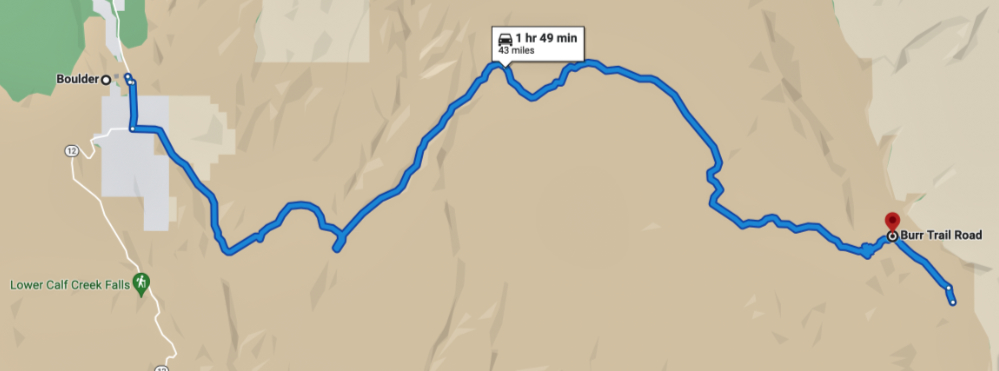
Controversial History
After centuries of use by indigenous people, the canyon was put into service as a livestock trail. A settler in 1882 complained, “It is the most God-forsaken and wild looking country that was ever traveled. . . . It is mostly uphill and sandy knee and then sheets of solid rock for the poor animals to pull over and slide down. I never saw the poor horses pull and paw as they done today.”
Decades of use made the trail wider and less difficult. Then in the 1960s the Atomic Energy Commission widened and smoothed the trail so it was easier to haul uranium from the mines. (Because, you know, it was the Atomic Age and the Cold War.) After the Glen Canyon Canyon National Recreation Area was established in the 70s, county officials wanted to pave the road for the benefit of tourist-dependent businesses at Lake Powell.
Through the 80s and 90s environmentalists fought the Park Service, the Utah legislature, and US senators over paving the road. Lobbying, litigation, and even Monkey Wrencher-style bulldozer burnings ensued. But the pro-pavers won out.
When I first drove Burr Trail it was only a chip seal road part of the way to the Waterpocket Fold. When I returned a few years later it was paved all the way to the switchbacks. That leaves me conflicted. I like to keep wild things wild, but I also like smooth access.
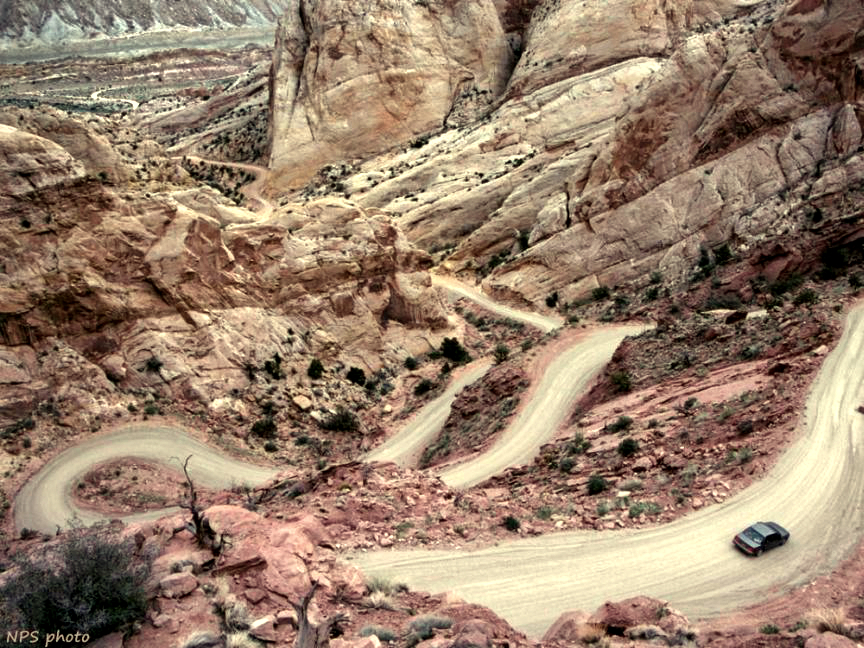
But it’s a beautiful drive
Burr Trail drops into narrow Long Canyon with sandstone cliffs rising up on either side. Then unpaved switchbacks descend the face of the Waterpocket Fold, after which you have the choice of turning north to the eastern side of Capitol Reef, or south into the Glen Canyon National Recreation Area and Lake Powell. Or you could certainly turn around and drive up the switchbacks and through the canyon again. It’s worth seeing twice. For a shorter drive, you might choose to turn around as you come out of Long Canyon into flatter, less dramatic terrain.
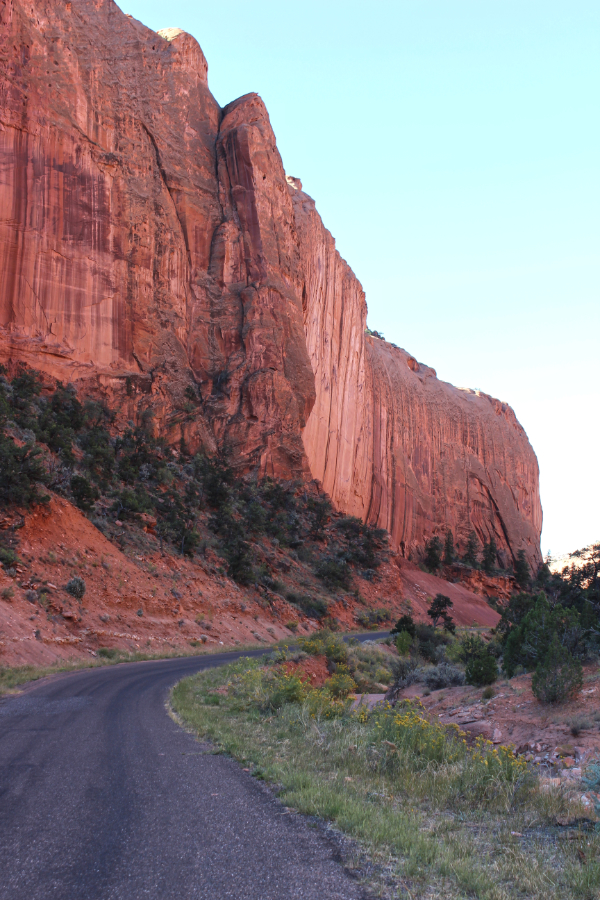
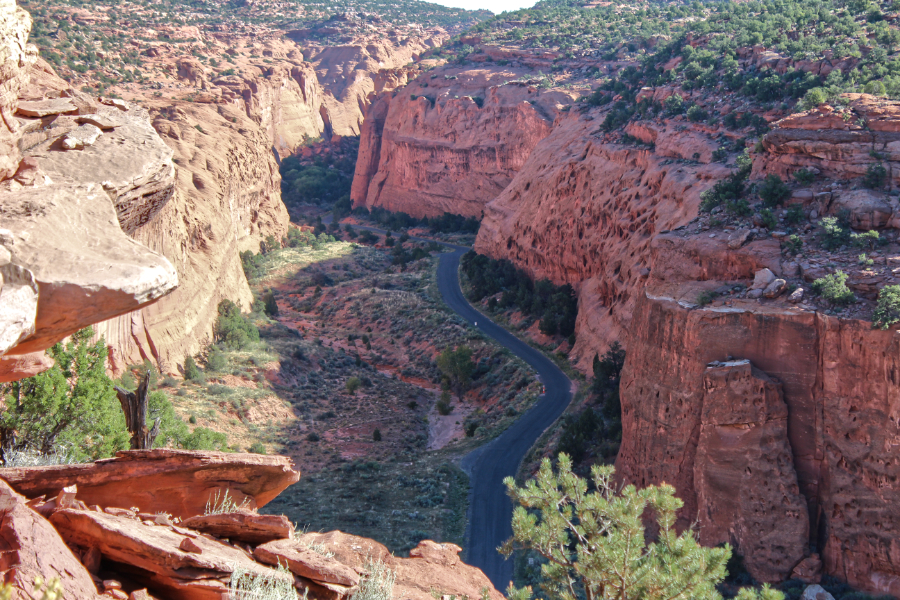
If you’re more adventurous, don’t mind driving on dirt roads, have a full tank of gas and plenty of water, you could explore the areas off Burr Trail, like Little Death Hollow and Upper Muley Twist.
Since all but the eastern end of Burr Trail is in Grand Staircase-Escalante National Monument, there are many opportunities for dispersed camping. Here are some of the spots posted at iOverlander.com.
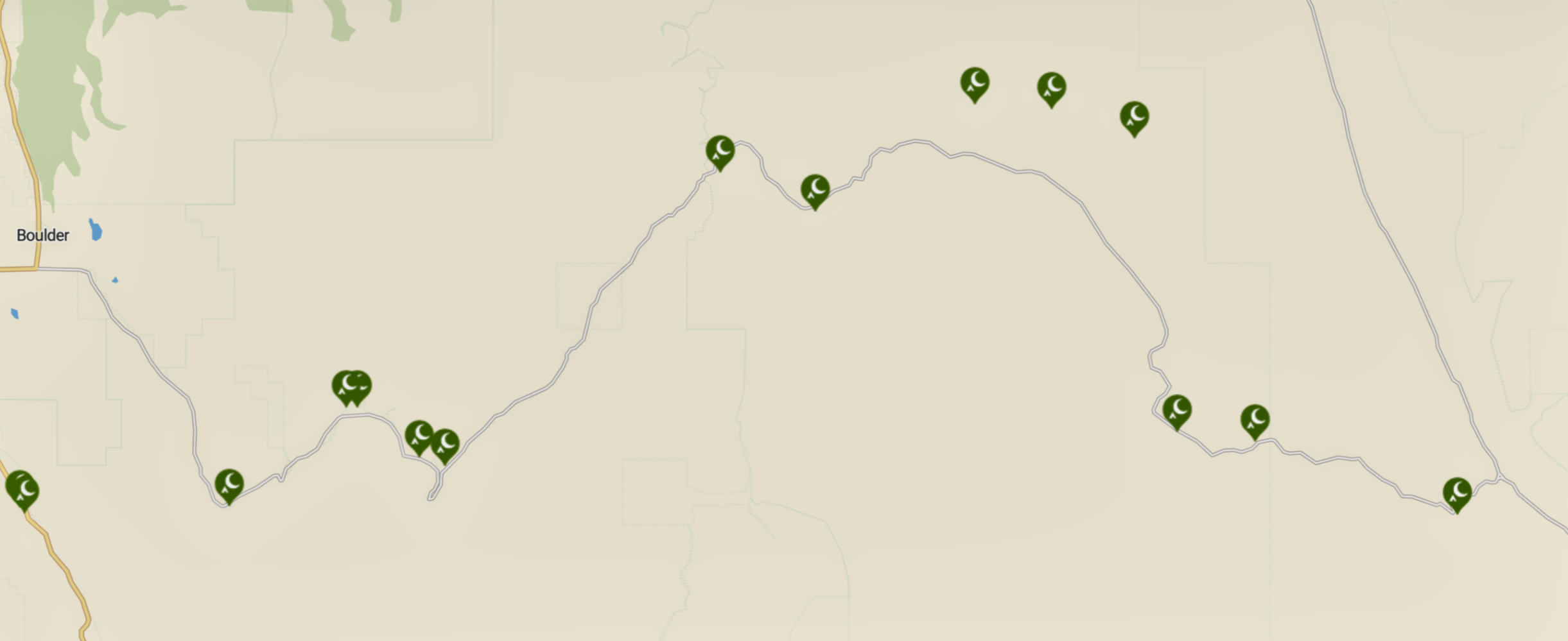
Early morning is my favorite time to drive Burr Trail. The tops of the cliffs glow in the rising sun and the canyon floor is in cool, lush shade. And traffic is almost nonexistent as most travelers are just dragging themselves out of bed. The early bird gets the solitude. And the dramatic lighting.
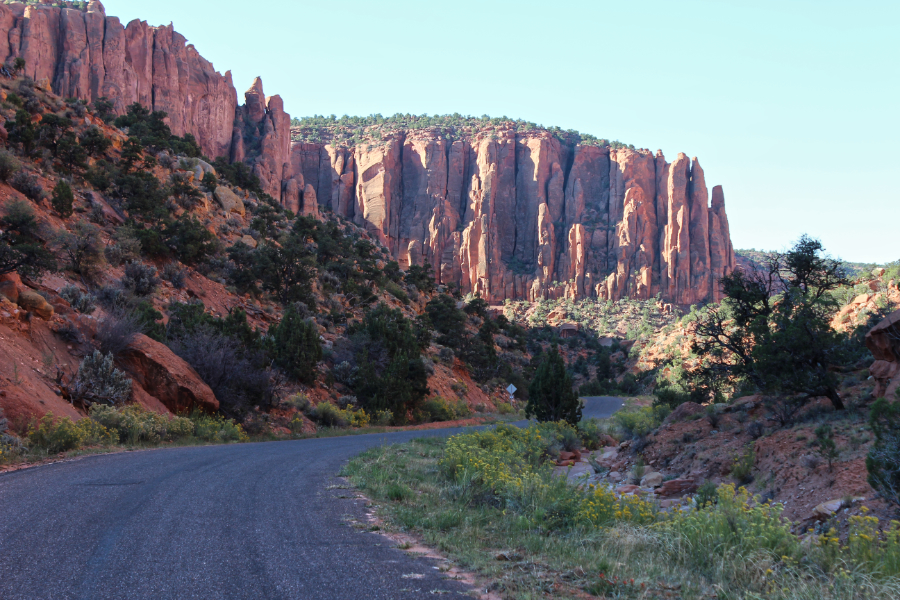

Thanks for this. Will definitely check it out once the van is complete and I hit the road. This is just gorgeous.
Great Adventure. I’ll keep it in mind! Thanks!
Beautiful pics
I was in that area in 2007 and loved it. My favorite “road” was the Bullfrog-Notam road. Talk about being in the middle of nowhere. This was it.
The water-and-fuel advisory is particularly relevant there.
Love this article. I will check out the drive. Looking forward to it.
Thank you for this valuable information Al. One day I hope to get out west. If I do I would surely like to drive these roads.
We drove this last.year.and I’m planning to check it out further when I’m back in September. My Mazda 3 did fine on all but the posted 4WD roads. I left those to the ones with trucks.
Al, gorgeous pictures with excellent description of the surrounding areas. ❤️❤️
I drove the Burr trail down into Capital Reef when it was still unpaved (I am sorry the pavers won out). The steepness of the switchbacks is breathtaking and not for the faint of heart. I’d advise against trying to drive this up or down without a 100% DEPENDABLE vehicle.